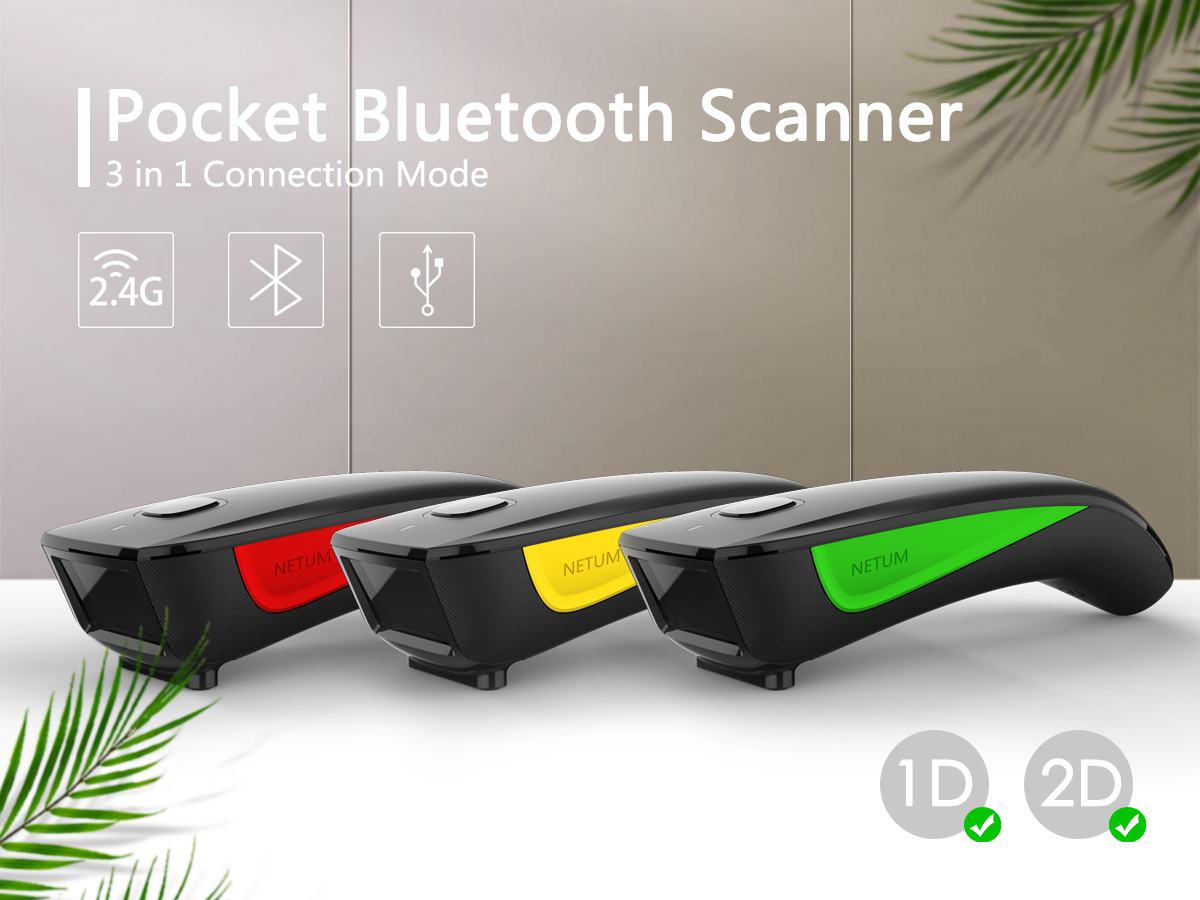In today's digital age, barcode scanning technology has integrated into all aspects of life and work. From scanning product barcodes at supermarket checkouts, to warehouse staff counting goods, and to courier outlets sorting packages, barcode scanners play a crucial role. Among them, usb barcode scanner, 1d barcode scanner, bluetooth barcode scanner and 2D barcode scanner are four common types. Each has its own characteristics and suitable application scenarios, so understanding their differences is essential.

The usb barcode scanner has become the first choice for many fixed scenarios due to its USB interface connection feature. It connects directly to devices such as computers and cash registers via a USB interface, requiring no complicated pairing process and supporting plug-and-play functionality. In terms of data transmission, the usb barcode scanner can quickly convert the scanned barcode information into digital signals and transmit them stably to the connected device, just like an efficient "data highway", ensuring no information loss or delay. At supermarket checkouts, cashiers use the usb barcode scanner to scan product barcodes, which instantly completes the reading of product information and price calculation, greatly improving checkout efficiency. However, the usb barcode scanner is limited by the length of the cable and can only be used within a fixed range, failing to meet the needs of mobile operations.
The1d barcode scanner is mainly used for identifying one-dimensional barcodes. One-dimensional barcodes are usually single-line codes composed of black and white stripes, and the common EAN code on product packaging is a typical one-dimensional barcode. When the 1d barcode scanner reads information, it is like reading a single line of text, only able to extract a string of numbers or letters from the barcode. Its advantages lie in fast scanning speed, high recognition accuracy and relatively low equipment cost. In the package sorting process of the logistics industry, staff use the 1d barcode scanner to scan the one-dimensional barcodes on packages, which can quickly identify the destination information of the packages and facilitate efficient sorting. However, the limitation of the 1d barcode scanner is obvious: it cannot identify two-dimensional barcodes and is ineffective in scenarios that require storing more information.
The bluetooth barcode scanner breaks the space limitation with its wireless connection feature. It pairs and connects with devices such as mobile phones, tablets and laptops through Bluetooth technology, without cable constraints, allowing users to operate freely within a certain range. For example, in large warehouses, managers carry the bluetooth barcode scanner and can flexibly scan the barcodes of goods between different shelves to record inventory information in real time, without having to run back and forth between the goods and the computer. However, the use of the bluetooth barcode scanner is affected by battery power and requires regular charging. Moreover, in complex wireless environments, there may be unstable signals, which affects data transmission.
The biggest difference between the 2D barcode scanner and the 1d barcode scanner lies in the recognition range. The 2D barcode scanner can not only identify one-dimensional barcodes but also two-dimensional barcodes. Two-dimensional barcodes are graphics distributed in black and white on a two-dimensional plane, which can store more information, including text, pictures, URLs, etc. The common QR code is a two-dimensional barcode. In the scenario of concert ticket verification, staff use the 2D barcode scanner to scan the QR codes on tickets, which can not only quickly verify the authenticity of the tickets but also read detailed information such as the ticket buyer's information and seat number. The 2D barcode scanner has stronger scanning accuracy and information storage capacity, but its equipment cost is relatively higher. In some scenarios that only require reading simple information, using the 2D barcode scanner will cause a waste of resources.

Overall, the usb barcode scanner is suitable for stable data transmission in fixed scenarios; the 1d barcode scanner is applicable to scenarios that only need to read simple one-dimensional barcode information and pursue low cost and high speed; the bluetooth barcode scanner meets the needs of mobile operations and is suitable for working environments with a large spatial range; and the 2D barcode scanner has more advantages in scenarios that require reading a large amount of complex information. When making a choice, you should select the most suitable barcode scanner according to the actual usage scenarios and needs to improve work efficiency.

